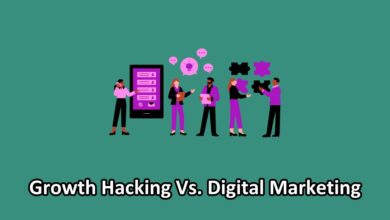In the world of data collection and analysis, two fundamental categories come into play: primary data and secondary data. Understanding the distinction between these data types is crucial for any professional involved in research or decision-making.
Primary Data refers to original data collected directly from the source. It involves researchers or data collectors gathering information firsthand, specifically for their study or project. Secondary data refers to existing information that was collected by someone else for a different purpose but can be repurposed or analyzed for new insights or research.
Primary Data vs. Secondary Data (A Comparison)
| Primary Data | Secondary Data |
|---|---|
| Primary data refers to the Information collected directly from original sources, using methods like surveys, interviews, observations, and experiments. | Secondary data refers to the Information collected by someone else for a different purpose, such as data from books, articles, reports, databases, or existing records. |
| Primary data is unique, original, and specific to the research study. It is tailored to address the research questions and is often more detailed and context-specific. | Secondary data is pre-existing and generic in nature. It is collected for various purposes and may not perfectly align with the specific requirements of a new research project. |
| It can be more expensive and time-consuming due to the need for designing research instruments, conducting surveys, interviews, or experiments. | It is generally more cost-effective as it does not involve the direct cost of data collection. |
| Primary data is collected directly by the researcher from the source. | Secondary data is obtained from pre-existing sources like reports, databases, or publications. |
| Primary data is highly customizable to meet the specific research objectives. | Secondary data is already collected, and as such, it may not perfectly align with your research needs. |
| Primary data is always current and tailored to your research timeline because it is collected for your study. | Secondary data can be outdated, depending on the source and its publication date. |
| Researchers have full control over the primary data collection process, ensuring the data’s quality and relevance to the research objectives. | There is no control over how the secondary data was originally collected or the methods used, as it was obtained from external sources. |
| Primary data is subject to potential researcher bias during data collection, as researchers are actively involved in gathering the information. | Secondary data may be less prone to researcher bias since you are not directly involved in the data collection process. |
| Primary data is unique to your study and cannot be found elsewhere. | Secondary data already exists and can be used by multiple researchers. |
What is Primary Data?
Primary data represents the cornerstone of any research project. It encompasses data collected through surveys, interviews, observations, or experiments. Researchers extract primary data to answer specific questions, investigate hypotheses, and gain unique insights into their subject of interest.
Example of Primary Data
Imagine you are conducting a survey to understand customer preferences in a particular market. The responses collected from the survey participants about their buying habits, product preferences, and satisfaction levels constitute primary data. This information is original, directly obtained for your research, and tailored to your study’s needs.
What Is Secondary Data?
Secondary data, on the other hand, refers to data that has already been collected and published by someone else. It is information that was not originally intended for your research but can still be valuable. Secondary data sources include academic papers, government reports, market research studies, and historical records.
Example of Secondary Data
Suppose you are researching the impact of social media on consumer behavior. Instead of conducting your own social media usage survey, you can analyze existing reports and studies that delve into this very topic. The data contained in these reports, created by other researchers, constitutes secondary data.
Pros and Cons of Primary Data
Pros
- Tailored Precision: Primary data allows you to design your research to answer specific questions.
- Freshness: It’s up-to-date and relevant to your immediate needs.
- Control: You have control over the data collection methods.
- Uniqueness: The data is unique to your research and cannot be found elsewhere.
- In-depth Insights: Provides a deep understanding of the subject.
Cons
- Resource-Intensive: Collecting primary data can be time-consuming and expensive.
- Bias Potential: Researcher bias may affect data collection.
- Data Collection Challenges: It can be challenging to reach a suitable sample.
Pros and Cons of Secondary Data
Pros
- Time and Cost-Efficient: Secondary data is readily available and cost-effective.
- Large Datasets: Often provides access to extensive datasets.
- Comparative Analysis: Allows for comparisons and historical data analysis.
- Diverse Sources: A wide variety of sources are available.
Cons
- Lack of Control: You have no influence over the data collection methods.
- Data Incompleteness: It may not perfectly align with your research needs.
- Quality Variability: The accuracy and reliability of secondary data may vary.
Key Differences Between Primary and Secondary Data
When choosing between primary and secondary data for your research, it’s essential to be aware of the key distinctions that set these data types apart.
Definition
- Primary Data: Primary data refers to information collected directly from original sources. It involves firsthand data collection methods, such as surveys, interviews, observations, and experiments.
- Secondary Data: Secondary data is information that has already been collected by someone else for a different purpose. It includes data from sources like books, articles, reports, databases, and other existing records.
Nature of Data
- Primary Data: Primary data is unique, original, and specific to the research study. It is tailored to address the research questions and is often more detailed and context-specific.
- Secondary Data: Secondary data is pre-existing and generic in nature. It is collected for various purposes and may not perfectly align with the specific requirements of a new research project. It is often less detailed and might lack the precision needed for a particular study.
Source of Data
- Primary Data: Collected directly by the researcher from the source.
- Secondary Data: Obtained from pre-existing sources like reports, databases, or publications.
Customization
- Primary Data: Highly customizable to meet the research objectives.
- Secondary Data: Already collected and may not perfectly align with your specific needs.
Bias
- Primary Data: Subject to potential researcher bias during data collection.
- Secondary Data: May be less prone to researcher bias since you’re not involved in data collection.
Uniqueness
- Primary Data: Unique to your study and not found elsewhere.
- Secondary Data: Already exists and can be used by multiple researchers.
Methods of Collecting Primary Data
Collecting primary data involves a range of techniques, each suitable for different research objectives:
- Surveys: Questionnaires or interviews to gather responses directly from participants.
- Interviews: In-person, phone, or online interviews for in-depth information.
- Observations: Systematic watching and recording of behaviors or events.
- Experiments: Controlled studies to test hypotheses and cause-and-effect relationships.
While collecting primary data is valuable, it comes with challenges:
- Sampling Bias: Ensuring your sample is representative of the population.
- Data Collection Tools: Selecting the right tools for your research.
- Ethical Considerations: Protecting the rights and privacy of participants.
- Data Validation: Checking for data accuracy and reliability. Best practices include thorough planning, effective communication with participants, and rigorous data validation.
Sources and Use Cases of Secondary Data
When embarking on research or decision-making processes, secondary data becomes a valuable resource, offering a wealth of information without the need for extensive data collection. Here, we’ll explore various common sources of secondary data:
- Government Databases: Government agencies are prolific data collectors. They compile information on demographics, economic indicators, public health, and more. Sources like the U.S. Census Bureau, the World Health Organization, and national statistical agencies provide a treasure trove of data for research in diverse fields.
- Academic Research: Universities and research institutions worldwide produce a continuous stream of scholarly work. Academic journals, dissertations, and research papers contain comprehensive studies, experiments, and analyses. These publications often provide detailed findings, making them valuable for meta-analyses and literature reviews.
- Market Reports: In the business world, market research is vital. Market research firms and industry-specific organizations generate comprehensive reports on market trends, consumer behavior, and competitive landscapes. These reports aid businesses in strategic planning, marketing, and product development.
- Public Archives: Historical records, including documents, photographs, and artifacts, are a rich source of secondary data. Archives maintained by institutions, libraries, and museums hold valuable insights into historical events, social changes, and cultural developments.
- Surveys and Polls: Organizations often conduct surveys and polls to gather data on public opinion, consumer preferences, or social issues. These surveys, whether conducted by research firms or government agencies, are valuable secondary data sources for understanding societal trends and attitudes.
- Corporate Data: Businesses generate an extensive amount of data, including sales figures, customer feedback, and financial reports. This corporate data can provide insights into market performance, consumer behavior, and the overall health of an industry.
Applications of Secondary Data in Research and Decision-Making
Secondary data applications are both diverse and versatile. Here are some illustrative use cases that highlight its significance in research and decision-making:
- Market Research: Secondary data is instrumental in assessing market conditions. Businesses use it to identify trends, analyze competitors, and make informed decisions about product development and market positioning. Market reports and industry analyses offer insights into market size, consumer behavior, and emerging opportunities.
- Public Policy Analysis: Government agencies rely on secondary data to craft effective policies and evaluate their impact. Data from sources like national surveys, economic indicators, and public health records help policymakers make informed decisions on issues such as healthcare, education, and social services.
- Historical Research: Historians use archives and historical records to delve into the past. Secondary data from these sources aids in reconstructing historical events, understanding cultural shifts, and contextualizing the evolution of societies.
- Academic Research: Secondary data is a cornerstone of academic research. Researchers draw upon existing studies, datasets, and literature to build on prior knowledge, conduct meta-analyses, and validate findings. It helps in expanding the body of knowledge across various academic disciplines.
- Environmental Studies: Environmental researchers use secondary data from sources like meteorological records, satellite imagery, and geological surveys to analyze climate change, natural disasters, and the impact of human activities on the environment.
- Healthcare Decision-Making: Healthcare professionals and organizations leverage secondary data to monitor disease trends, evaluate the effectiveness of treatments, and improve patient care. Public health records and clinical studies contribute to informed medical decisions.
Conclusion
The understanding of primary and secondary data is essential in the world of research and data analysis. Additionally, related concepts such as data collection, analysis, and interpretation play a crucial role in research projects. In conclusion, selecting the right data type—primary or secondary—depends on the research objectives, available resources, and the depth of insights required. Both data types have their strengths and weaknesses, making them valuable tools in the hands of skilled researchers.



One Comment